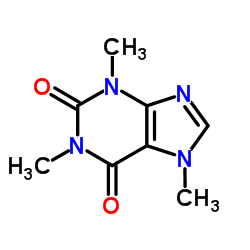PLANT CHEMISTRY
Phytochemistry
Plant chemistry, also known as phytochemistry (from the ancient Greek phutón or ‘plant’) is one of the richest areas of chemistry in terms of variety; with common chemical elements making up a seemingly infinite array of structures. In introducing this topic, it might be helpful to recap some basic chemical concepts.
Atoms
The atom is a singular ‘unit’ of a chemical element. Each atom consists of a nucleus, containing protons and neutrons, around which electrons form an electrically charged outer ‘shell’. The electrons on the outer shell govern an atom’s attraction to, or repulsion from, other atoms.
The number of electrons on the atom’s outer shell also determine the atom’s capacity to form bonds with other atoms – we call this capacity to form bonds an atom’s valence.
The image (below left) demonstrates in simple terms, how electrons in an atom’s outer shell form (covalent) bonds with electrons in neighbouring atoms to produce a compound - in this case the natural gas methane (CH4); which is shown in '3D' form (below right).
The Periodic Table
The Periodic Table, right, classifies elements
– from left to right - by atomic number (the number of protons in each nucleus) in rows called periods.
The ordering of the periodic table from top to bottom provides indications about the chemical group an element belongs to and its properties, i.e. whether it is a solid, liquid, gas or metal - as well as its stability and reactivity.
In the periodic table shown below, the elements most commonly found in plant compounds: hydrogen; carbon; nitrogen; oxygen and sulfur are highlighted.
Compounds
| Element | Symbol | Atomic Weight (amu) | Valence |
|---|---|---|---|
| Carbon | C | 12 | 4 |
| Hydrogen | H | 1 | 1 |
| Oxygen | O | 16 | 2 |
| Nitrogen | N | 14 | 3 |
| Sulfur | S | 32 | 6 |
Most compounds
(a combination of two or more elements bonded together) found in plants are composed from the following elements:
If we imagine each atom of each element as a 'number' we can add, subtract or multiply these 'numbers' to produce the ‘sum’ of a compound.
Our sum is expressed as a formula, e.g. caffeine is C8H10N4O2
A formula tells us the atomic composition of a compound – in the case of caffeine that it contains 8 carbons, 10 hydrogens, 4 nitrogens and 2 oxygens. This formula can be used to calculate a compound’s total molecular weight
(measured in atomic mass units
or amu).
C(12)*8+H(1)*10+N(14)*4+O(16)*2=194.
To work out the molecular weight of caffeine, we can perform the following calculation:
Therefore, if we are trying to find caffeine in a mixture, we know its approximate mass is 194 amu. This is very helpful when it comes to analyzing mixtures and determining their contents.
Bonding
A bond is the connection (or linkage) between atoms in a compound. Bonds are necessary to form a compound and - to modify a compound - these bonds must be broken.
Hydrogen can form 1 bond with a neighboring atom; oxygen 2 bonds; nitrogen 3 bonds; carbon 4 bonds and sulfur, up to 6 bonds.
The composition of bonds within a compound results in a net electrical charge (positive, negative or neutral) which determines the polarity of the compound.
Polarity
Polarity refers to the overall electrical charge a molecule possesses. This value (measured as a dipole moment or µ) results from the sum of charges within a molecule’s electron bonds. (e.g. bonds 1+-1=0 a neutral charge; 1+1=2 a positive charge: and -1+-1=-2 a negative charge.
The compound’s name also changes from methane - with the suffix ‘ane’ representing the single bonds - to methanol with the suffix ‘ol’ representing the addition of the hydroxy (OH) functional group. In chemistry naming, or nomenclature, is very important - as the name of a compound usually indicates the type of structure or the properties it has.
For example, methane (CH4) has a net neutral charge but, methanol (CH3OH) has a net positive charge.
With the addition of an oxygen atom, CH4 forms an OH (hydroxy) group becoming CH3OH - increasing its neutral charge so that it becomes positively charged or polar. (N.B. this is a theoretical reaction, methane cannot be directly converted into methanol, yet).
Compound Classes
Alkaloids
Alkaloids contain nitrogen atoms and generally oxygen atoms too. They are often bitter in taste. Alkaloid compounds are well known as recreational drugs (e.g. caffeine and nicotine) and they frequently have psychoactive properties. Alkaloids also figure prominently as pharmaceutical drugs, e.g. quinine and morphine.
Alkaloids contain nitrogen atoms and generally oxygen atoms too. They are often bitter in taste. Alkaloid compounds are well known as recreational drugs (e.g. caffeine and nicotine) and they frequently have psychoactive properties. Alkaloids also figure prominently as pharmaceutical drugs, e.g. quinine and morphine.











